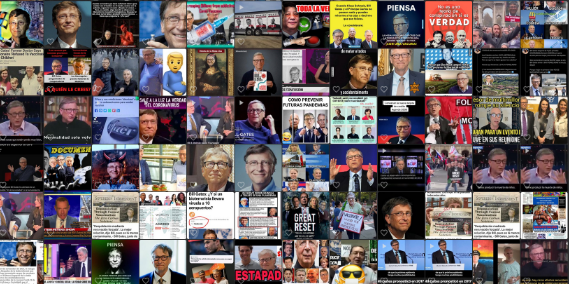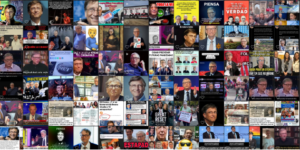This last couple weeks David Arroyo, the head of our research group, delivered two workshops on the Espacio Fundación Telefónica. A multipurpose space full of expos and talks to drive knowledge forward. The first workshop: Ciencia y Fake News. Taller práctico sobre herramientas, técnicas y metodologías, held on the 3rd of November, presented a hands-on methodology to evaluate the source of a news piece. The second one: Entre el más allá y el más acá del sentido común, held on November 7, drew comparison between the scientific method and the search for good quality information online.
Both workshops follow our drive to make use of collective work and OSINT to clean our digital spaces of mis- and dis-information. So lets reflect on some of the main talking points.
- One notion we like to underline is the difference between an honest mistake and malicious deception. It is a difference that mirrors that between misinformation, the diffusion of inaccurate or incomplete information; and disinformation, the creation of false information which is deliberately intended to mislead. Although both can be used with malice.
On May 2021 Newtral, an spanish factchecking agency, denied the veracity of a Whatsapp chain text that assured a doctor has claimed that in India only those that had been vaccinated were catching Covid-19. That sentence was taken completely out of context from an interview with doctor Amaia Forces. One case where, even the source being truthful, misguided information was being extended.
- This does not only happen with text. It is common to see the use of media, specially images when delivering a false narrative.
Both in cases where the image being share with a narrative is out of context. Or when the piece of media is out of its time, sharing old images as a reaction to current events. On April 2020 a photo showing overcrowded balconies as a supposedly consequence of lockdown on India was making the rounds. The actual photo was from 2011 in Nairobi (Kenia).

- Out of context images aren’t the only media being shared when spreading false narratives. One big staple of today digital communications are memes, and we can’t underestimate them. Common cases of ingroup communications where behind the appearance of a joke, several political stances are being defended. In tandem with memes a common in-group communication is the use of dogwhistles. Apparently innocent or non-sensical messages might have a bigger and more defined meaning if you belong and understand the codes of a closed community.

- Another common strategy in the diffusion of fake narratives is the use of scientific legitimate sources, at leas in appearance. The use of pre-prints, articles not yet accepted by a journal; statements from scientific experts, that are talking outside of their area of expertise; or retracted articles, publications that have been taken down due to being exposed as misguided or fake. This disinformation is hard to debunk, as it uses codes and structures that make it seem like a backed and peer-review source.
This cases of false communications where more common during the Covid than seemingly ever before. So upon the distribution of false narratives, sometimes backed by apparent scientific articles or supposedly experts in an area and using media content that seems legit or harmless. What can we do to protect ourselves?
First of all, its good to keep this strategies in mind, knowing how they work will help us recognize them. But we also have several open source intelligence external resources on the internet.
- Google or Yandex Reverse Image Search can help you find the original source of an image, showing how it was taken out of context.
- When the source is a scientific article is good to look it up but search also both the author and the journal. Is it a renown journal or completely unheard of? Has it been peer-reviewed? Is the author an expert in this field or are all their previous research from another area?
- Retraction Watch, and their public database, are both amazing resources to check scientific articles that have been retracted from a journal due to their research being debunked or having proven to be wrongly done.
- Same-wise if the source is a news piece is good to check both the article, the claim being made and the news site it belongs to. Media Bias Fact Check contains record of previously fact-checked articles on sites of a renown badly reputation. And facts can be widely checked by the numerous fact-checking agencies and independent fact-checkers.
- This aren’t the only tools. There are so many open source and cooperative efforts being made to fight disinformation. Bellingcat, and Maldita, both organizations with a wide history of OSint and fact-checking respectively, have made available a toolbox of their most common used tools.
It is impossible to manually check every information we get online. The tides of discourse in digital spaces move fast and we are bombarded with constant facts about every single ongoing event. But we have to keep our alarms up, disseminate what seems to be plausible or not, and always check when the truthfulness of a narrative is of importance.

